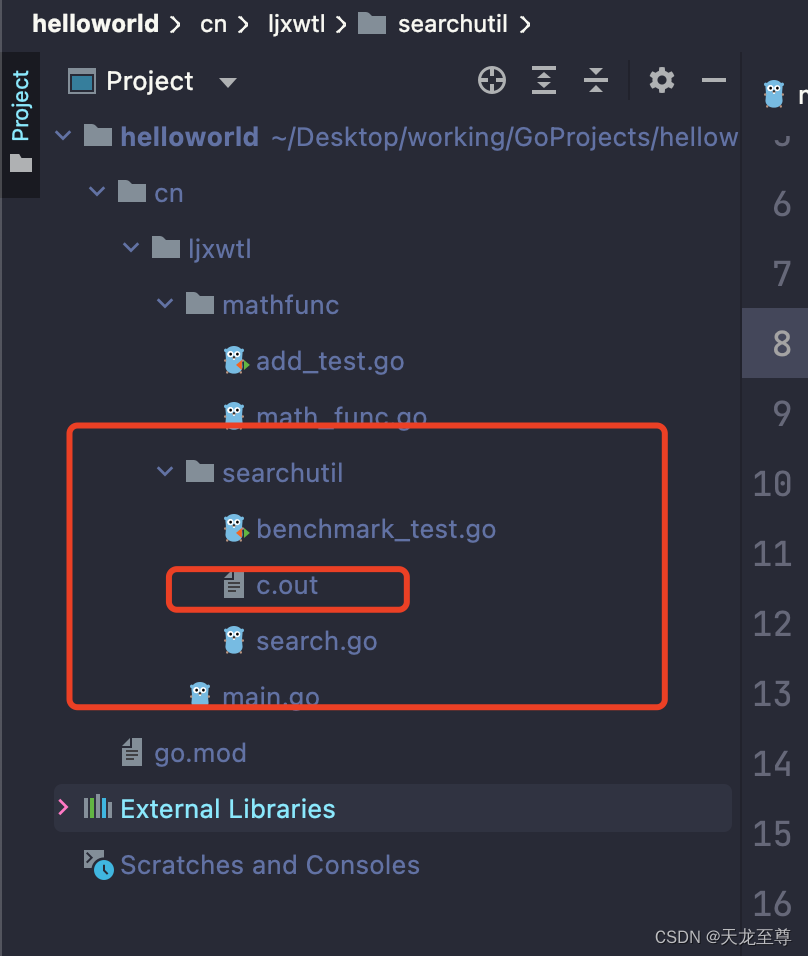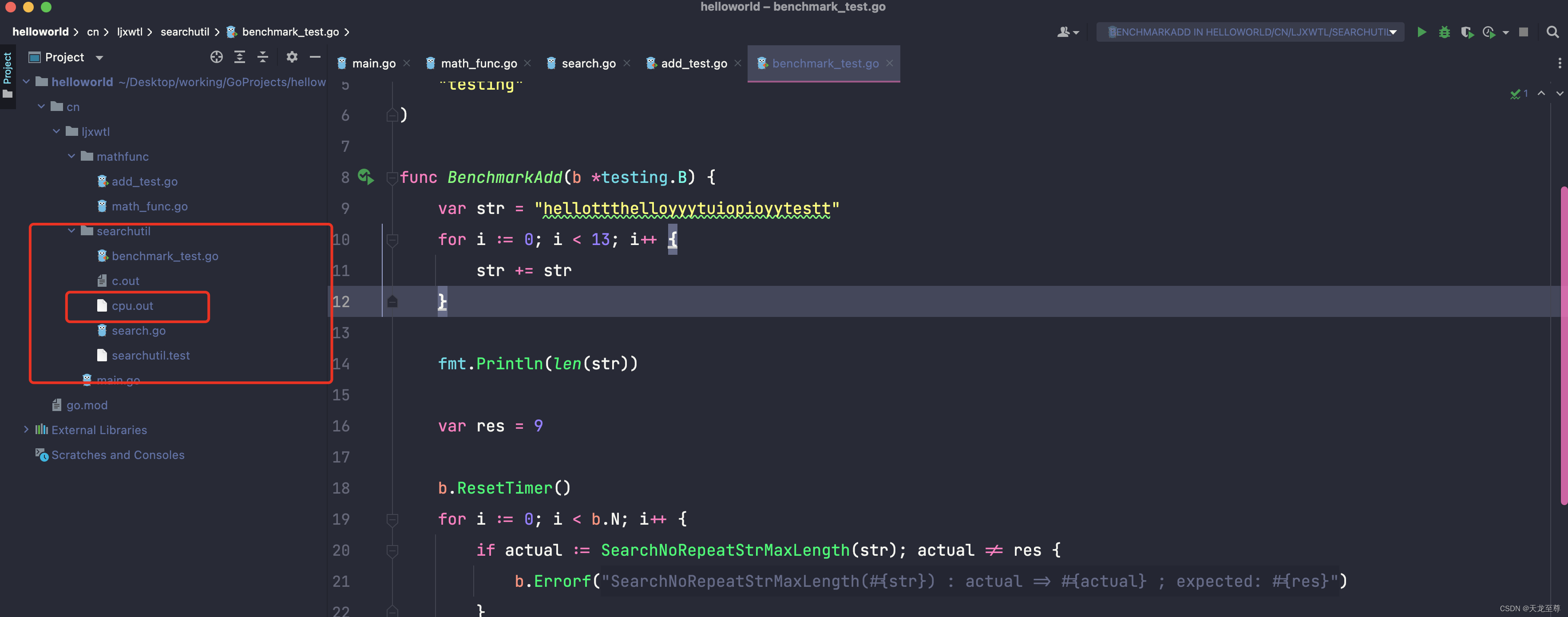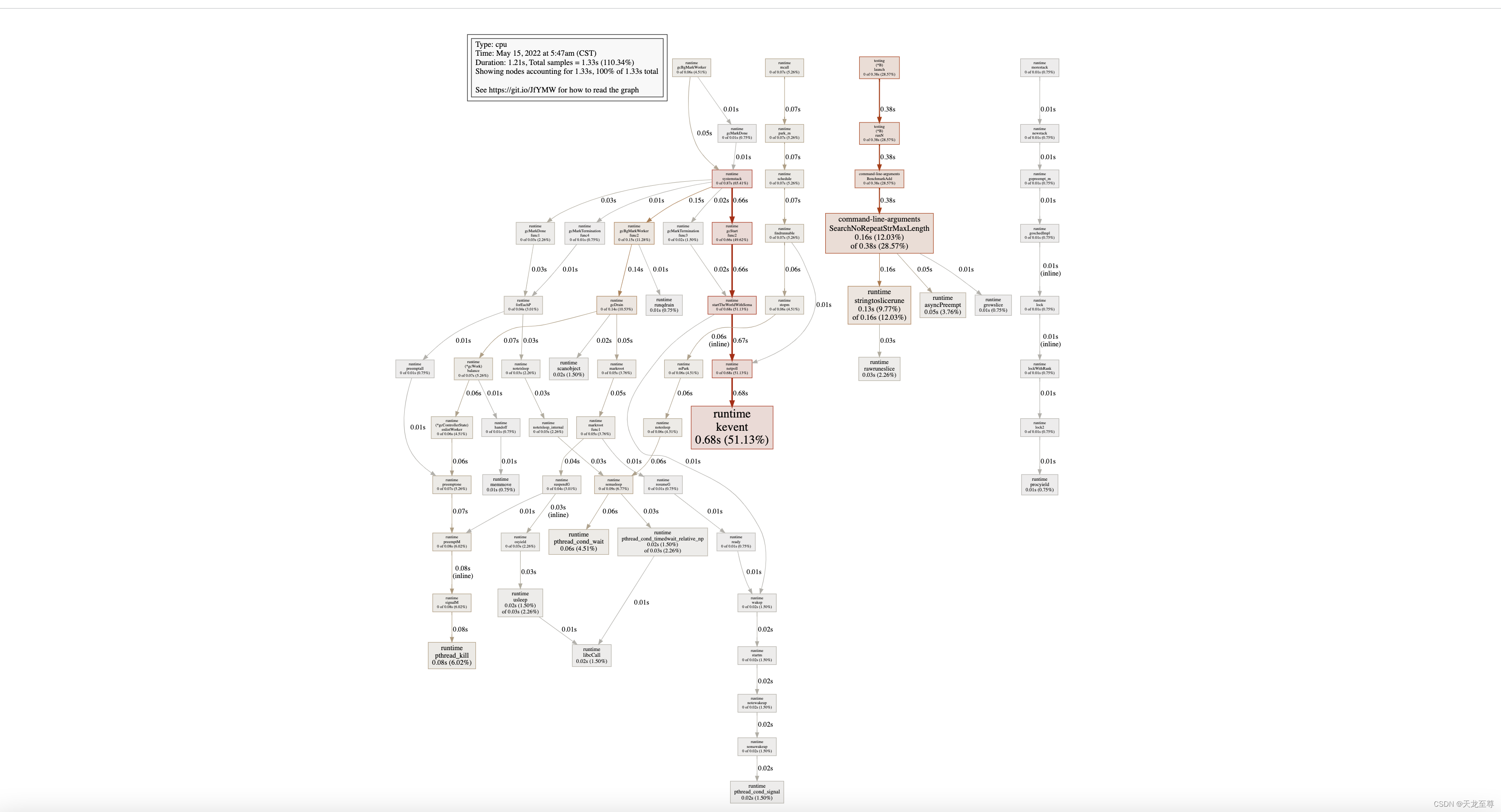一、简介
单元测试主要是通过模拟业务中的参数,调用我们的函数,然后获取执行结果,再判断结果是否符合规则;同时还可以对某一个方法进行性能分析
在Go 标准库中有一个叫做
testing
的测试框架, 可以用于单元测试和性能测试. 它是和命令
go test
集成使用的,测试文件是以后缀
_test.go
命名的, 通常和被测试的文件放在同一个包中.
规则:
- 单元测试代码的go文件必须以_test.go结尾,Go语言测试工具只认符合这个规则的文件
- 单元测试的函数名必须以Test开头,是可导出公开的函数。备注:函数名最好是Test+要测试的方法函数名
- 测试函数的签名必须接收一个指向testing.T类型的指针作为参数,并且该测试函数不能返回任何值
math_func.go:
package mathfunc
func Add(num1 int, num2 int) int {
return num1 + num2
}
add_test.go:
package mathfunc
import (
"testing"
)
func TestAdd(t *testing.T) {
tests := []struct{ a, b, c int }{
{1, 2, 3},
{4, 5, 9},
{5, 5, 10},
{40000, 50000, 90000},
}
for _, test := range tests {
if actual := Add(test.a, test.b); actual != test.c {
t.Errorf("Add(%d,%d) actual is %d , expected is %d", test.a, test.b, actual, test.c)
}
}
}

search.go:
package searchutil
func SearchNoRepeatStrMaxLength(str string) int {
runeStrArray := []rune(str)
var strRune = make([]rune, 0)
var ensureStrRune []rune = nil
var length = -1
for _, r := range runeStrArray {
if len(strRune) != 0 {
if strRune[len(strRune)-1] != r {
strRune = append(strRune, r)
} else {
if len(strRune) > length {
length = len(strRune)
ensureStrRune = make([]rune, 0)
ensureStrRune = append(ensureStrRune, strRune...)
}
strRune = strRune[0:0]
continue
}
} else {
strRune = append(strRune, r)
}
}
if len(strRune) > length {
length = len(strRune)
ensureStrRune = strRune
}
return len(ensureStrRune)
}
benchmark_test.go:
package searchutil
import (
"fmt"
"testing"
)
func BenchmarkAdd(b *testing.B) {
var str = "hellottthelloyyytuiopioyytestt"
for i := 0; i < 13; i++ {
str += str
}
fmt.Println(len(str))
var res = 9
b.ResetTimer()
for i := 0; i < b.N; i++ {
if actual := SearchNoRepeatStrMaxLength(str); actual != res {
b.Errorf("SearchNoRepeatStrMaxLength(%s) : actual => %d ; expected: %d", str, actual, res)
}
}
}

二、单元测试使用
2.1 普通测试
普通测试主要是验证返回的结果是否符合预期,执行的命令如下所示
go test -v add_test.go math_func.go
命令执行后,返回的结果如下所示

从上图中可以看到,单元测试提示测试通过,说明我们程序符合预期
2.2 性能测试
性能测试主要是通过多次调用程序,总耗时来分析程序的性能,类似于AB压力测试,执行命令如下所示
go test -v --bench="BenchmarkAdd$" --run=none benchmark_test.go search.go
命令中的
-bench="BenchmarkAdd$"
参数代表要执行哪一个方法,执行结果如下所示

2.3 测试覆盖率
go test -coverprofile c.out

go tool cover -html=c.out
生成的代码覆盖率页面:

2.4 性能分析
性能分析主要是查看方法中具体的瓶颈,比如A方法调用了C、B、D多个方法,具体耗时在什么位置,我们可以在上一条性能测试的命令中加入
-cpuprofile cpu.out
参数(文章附录有多种分析指标类型)加入到性能测试中的具体信息保存
go test -v --bench="BenchmarkAdd$" --run=none -cpuprofile cpu.out benchmark_test.go search.go

 通过go 自带工具分析保存的文件
通过go 自带工具分析保存的文件
go tool pprof cpu.out

提示需要安装Graphviz,下载链接如下:
Download | GraphvizSource CodeSource code packages for the latest stable anddevelopment versions of Graphviz are available, along with instructions for anonymous …http://www.graphviz.org/download/ 安装完成后,再次运行:
go tool pprof cpu.out

交互式输入web,即可打开性能分析图:

版权归原作者 AI机械师 所有, 如有侵权,请联系我们删除。